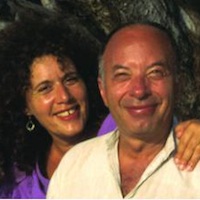If there is one yoga that that leads to Self-Realization it is non-injury or ahimsa. Yoga Master Swami Satchidananda
Imagine, as John Lennon said, what a world it would be if there were no wars and no suffering. How cool it would be if we could set just one day aside each year when we all stop causing pain and focus on harmlessness. A day when peace is more important than all our differences.
‘Make love not war’ may be the key to a better life but if we look around that isn’t what’s happening in today’s world. Yet there is nothing that could be more significant, helpful, or honoring of human existence and decency than non-injury, called ahimsa in yoga. If we were to practice this we would be aware not to think ill of others, not to use words that are hurtful or aggressive, or commit actions that can be destructive and cause pain.
This may sound so simple, but ahimsa actually requires a complete shift in attitude. Few of us get through life without causing harm, whether by ignoring someone’s feelings, by using more of the earth’s resources than we need, or by buying products made by underage and underpaid workers. What to do when insects invade the kitchen or slugs eat away at the vegetable garden, yet we don’t want to harm them? And how often do we do things that are hurtful or harmful to ourselves?
How many times a day, consciously or otherwise, do we put ourselves down, reaffirm our hopelessness, dislike our appearance, or see ourselves as incompetent or unworthy? How much resentment, guilt, or shame do we hold on to, thus perpetuating negativity?
In a world where selfishness and self-interest are the norm, it takes great courage not to react with greed or anger, which can so easily lead to violence. Yoga teaches us to be honest, respectful, to take care of ourselves and others. Ahimsa is integral to these fundamental yoga teachings. Simply through the intent to cause less pain each of us can bring greater dignity to our world, so that harm is replaced with harmlessness and disrespect with respect.
Gandhi, one of India’s greatest yogis, was the champion of ahimsa. He changed the course of history in India by showing how harmlessness is more powerful than violence, inspiring millions of others to follow his lead. Both Nobel Peace Prize winners, the Dalai Lama and Ang San Suu Kyi, are long-term meditation practitioners and activists devoted to peacefully reclaiming the freedom of their countries. All three have used the power of meditation and harmlessness to show that human dignity through non-injury is the essence of human decency. For instance, while the Dalai Lama is known for his pacifist attitude toward the Chinese, it is less well known that he rises at four a.m. each day to meditate for at least two hours – he is a true yogi!
Nelson Mandela, Bishop Tutu, and Martin Luther King, Jr., have all being fearlessly dedicated to non-violence, often in the face of tremendous opposition, as have numerous other lesser-known figures who, motivated by their meditation, faith, and belief in non-injury, have added their voices and sometimes even their lives. President Clinton asked Nelson Mandela if he was angry at his imprisonment and he answered, “If I were I would be still in prison.”
By developing a sense of respect for others and a concern for their welfare we reduce our own selfishness, which is the source of all problems, and enhance our sense of kindness, which is a natural source of goodness. The Dalai Lama
Practicing mindful yoga, sitting in quiet reflection, meditation or prayer has an immediately calming and peaceful effect. When we get off the cushion that peace stays with us, highlighting any tendency to cause harm and making such behavior far less likely. It becomes even more improbable as we deepen in awareness of our fundamental interconnectedness, for then violence toward another is the same as causing harm to ourselves.
Try this: Throughout the day, whether practicing yoga or meditation or wherever you are, silently repeat: “May I be well, May others be well, May I practice harmlessness to myself and to all others.”
What does harmlessness mean to you? How can you bring more ahimsa into your life? Do comment below.
Photo ‘Peace’ by Aldrin Muya at Flickr.com
 Share on bsky
Share on bsky




Read 7 comments and reply